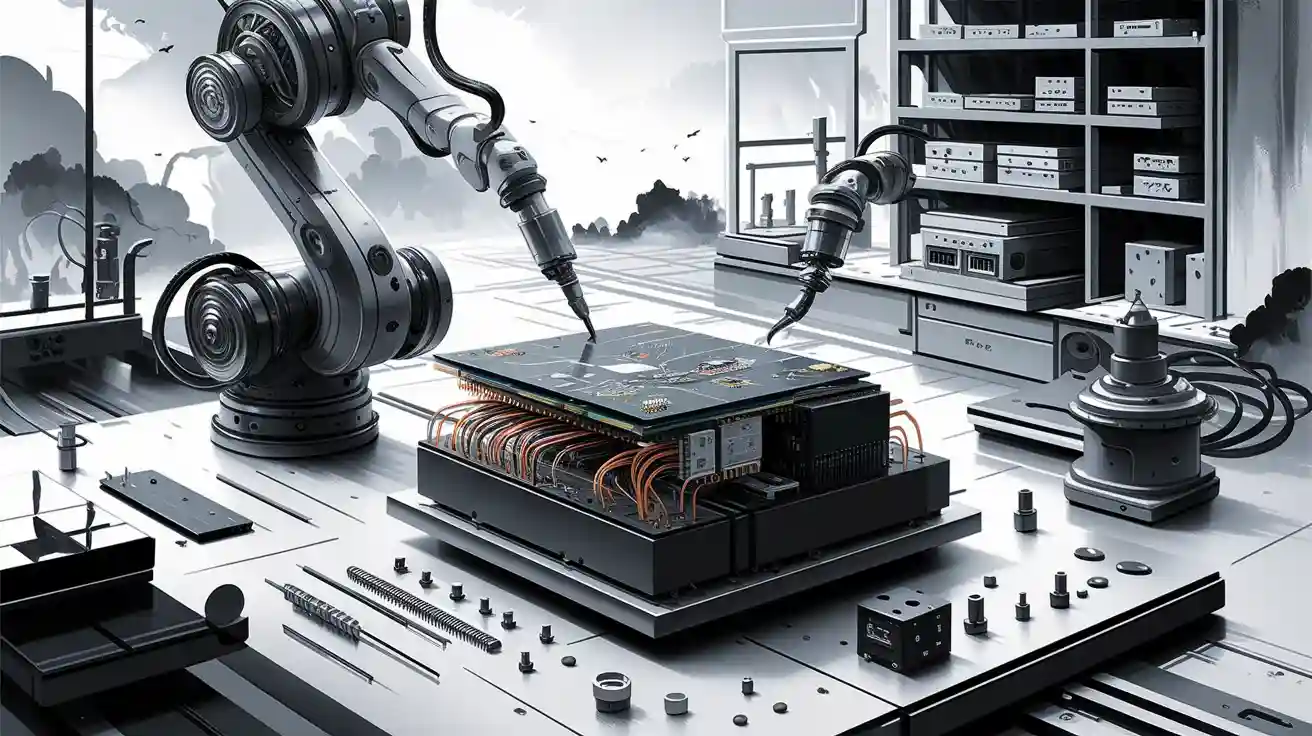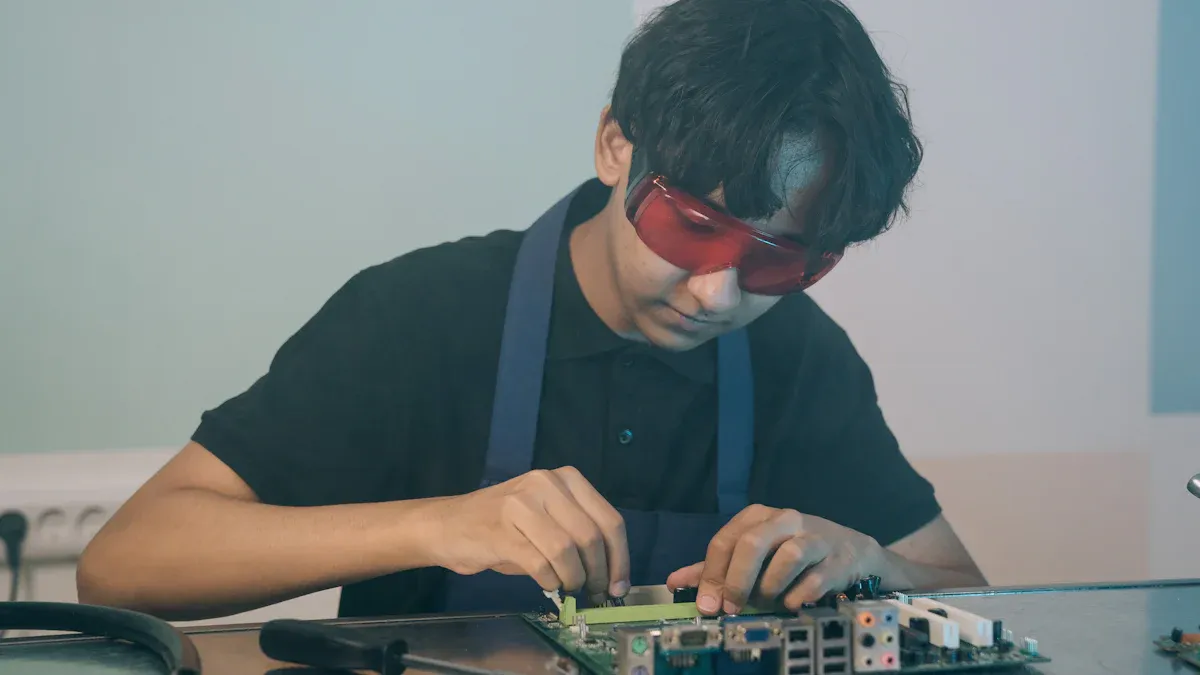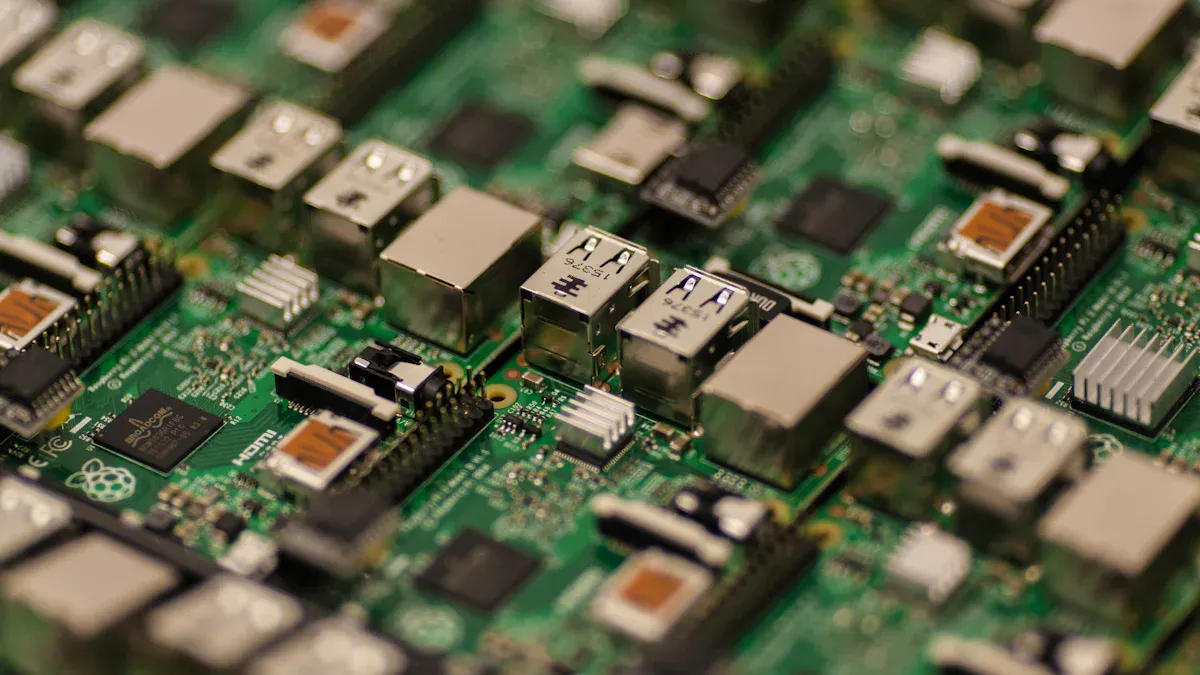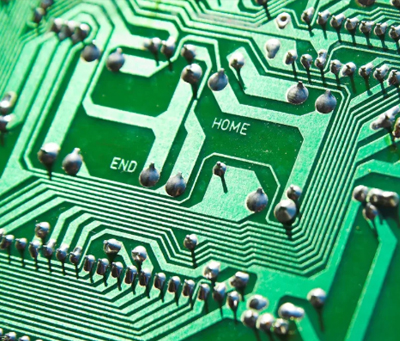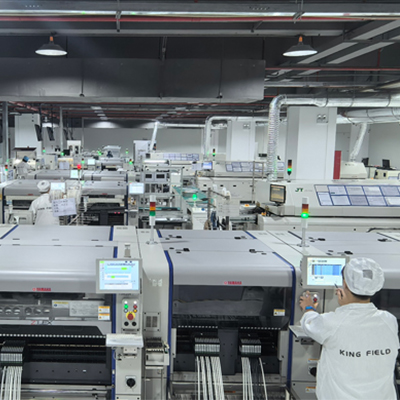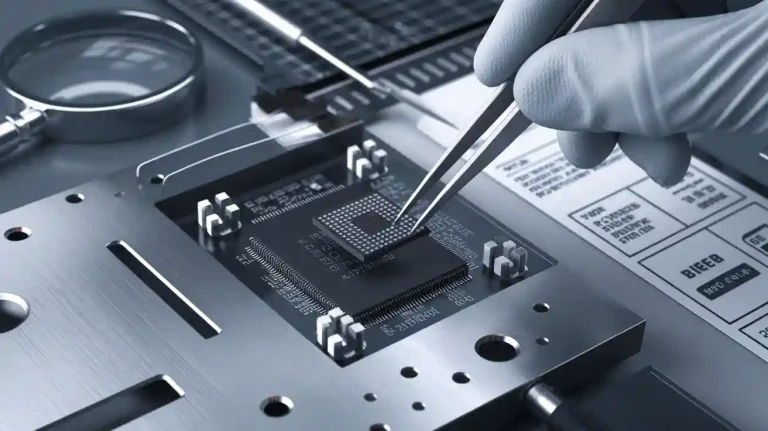How PCB Box Build Assembly Works and Its Role in Modern Industries
In the world of electronics, pcb box build assembly plays a vital role in creating functional systems. It extends beyond basic circuit board production to include enclosures, wiring, and subassemblies. This process ensures that individual components work seamlessly as one unit. I’ve seen how this approach transforms raw materials into finished products ready for end-users.
An electronic manufacturing service (EMS) provider often handles this complex process. Their expertise ensures precision and reliability. By integrating various elements, they help businesses achieve efficient, high-quality production. This makes pcb box build assembly a cornerstone of modern electronic manufacturing service.
Key Takeaways
- PCB box build assembly combines circuit boards with cases, wires, and plugs to make full electronic devices.
- Checking quality is very important to make products reliable and avoid expensive fixes.
- Careful testing, like checking how it works and its circuits, finds problems early and makes products better.
- Picking good materials and parts is key for long-lasting use, especially in tough fields like cars and healthcare.
- Good planning and design reduce mistakes and speed up making products, so they are ready faster.
Understanding PCB Box Build Assembly
What is PCB box build assembly?
PCB box build assembly refers to the process of integrating a printed circuit board (PCB) into a complete electronic product. It involves more than just assembling the PCB itself. This process includes adding enclosures, wiring, connectors, and other mechanical components to create a fully functional system. I often describe it as the final step in electronic manufacturing, where all the individual parts come together to form a finished product.
Unlike standalone PCB assembly, box build assembly focuses on the entire system. It ensures that the product is ready for use by the end-user. This process requires careful planning and execution to meet design specifications and quality standards. I’ve seen how this approach streamlines production and reduces the time it takes to bring products to market.
Difference between PCB assembly and box build assembly
PCB assembly and box build assembly serve different purposes in the manufacturing process. PCB assembly focuses solely on mounting electronic components onto the PCB. This step involves soldering components like resistors, capacitors, and microchips onto the board. It ensures that the PCB can perform its intended electrical functions.
Box build assembly, on the other hand, goes beyond the PCB. It includes integrating the assembled PCB into a larger system. This process involves tasks like installing the PCB into an enclosure, connecting wires, and adding mechanical parts. I often think of PCB assembly as the foundation, while box build assembly completes the structure.
Here’s a simple comparison:
| Aspect | PCB Assembly | Box Build Assembly |
|---|---|---|
| Focus | Assembling components onto the PCB | Integrating the PCB into a complete system |
| Scope | Limited to the PCB | Includes enclosures, wiring, and more |
| End Goal | Functional PCB | Fully functional product |
From my experience, both processes are essential. PCB assembly ensures the board works as intended, while box build assembly ensures the entire product functions seamlessly.
Components in PCB Box Build Assembly
Printed circuit boards (PCBs)
The printed circuit board forms the backbone of any electronic device. It provides the platform for mounting and connecting electronic components. I often think of the PCB as the central nervous system of a product. It ensures that signals and power flow seamlessly between components. In box build assembly, the PCB is already assembled with components like resistors, capacitors, and microchips. This ensures it performs its intended functions before integration into the final product.
The design and quality of the PCB directly impact the performance of the entire system. I’ve seen how even minor flaws in the PCB can lead to significant issues in the final product. That’s why manufacturers prioritize precision during the PCB assembly process.
Enclosures and housings
Enclosures and housings protect the internal components of a product. They shield the PCB and other parts from environmental factors like dust, moisture, and physical damage. I’ve worked with various types of enclosures, ranging from simple plastic cases to complex metal housings designed for industrial applications. These structures also play a role in the product’s aesthetics and user experience.
Selecting the right enclosure requires careful consideration of the product’s intended use. For instance, a consumer electronic device might prioritize sleek design, while an industrial product might focus on durability. I always emphasize the importance of balancing functionality and appearance when choosing enclosures.
Tip: Properly designed enclosures not only protect the components but also enhance the product’s overall appeal.
Wiring and connectors
Wiring and connectors serve as the lifelines of an electronic system. They establish the necessary connections between the PCB, power sources, and other components. I’ve seen how the choice of wiring and connectors can significantly impact a product’s reliability and performance. High-quality materials ensure stable connections and reduce the risk of failures.
In box build assembly, wiring involves routing cables neatly and securely to prevent interference or damage. Connectors, on the other hand, must fit precisely to ensure seamless integration. I always stress the importance of testing these connections during the assembly process to avoid potential issues later.
Subassemblies and mechanical parts.
Subassemblies and mechanical parts play a crucial role in PCB box build assembly. These components act as the building blocks that bring functionality and structure to the final product. I often view subassemblies as smaller, pre-assembled units that simplify the integration process. They include items like power modules, cooling systems, or motor assemblies, which are essential for specific applications.
Mechanical parts, on the other hand, provide the physical framework for the product. These include brackets, fasteners, hinges, and other structural elements. I’ve seen how these parts ensure stability and durability, especially in devices exposed to harsh environments. For example, industrial equipment often relies on robust mechanical components to withstand vibrations and extreme temperatures.
Note: Proper alignment and secure installation of mechanical parts are critical to avoid operational issues or product failures.
During the assembly process, I prioritize the compatibility of subassemblies and mechanical parts with the PCB and enclosure. This requires precise measurements and careful planning. I’ve learned that even minor misalignments can lead to costly delays or rework. Manufacturers often use CAD software to design and test these components before production, ensuring they fit seamlessly into the overall system.
Here’s a quick breakdown of their importance:
- Subassemblies: Streamline the assembly process and enhance functionality.
- Mechanical parts: Provide structural integrity and protect internal components.
From my experience, these elements are indispensable in creating reliable and high-performing products. Their integration demands attention to detail and a commitment to quality.
Box Build Assembly Process
Design and planning
Design and planning form the foundation of the box build assembly process. I always start by analyzing the product requirements and specifications. This step involves creating detailed blueprints and schematics that outline how the printed circuit board, wiring, enclosures, and mechanical parts will integrate into the final product. Precision is key here. A well-thought-out design minimizes errors and ensures smooth assembly.
I often use computer-aided design (CAD) software to visualize the product and simulate its functionality. This allows me to identify potential issues before production begins. For example, I once worked on a project where CAD simulations revealed a misalignment between the PCB and its enclosure. Addressing this early saved time and resources during assembly.
Effective planning also includes defining the workflow. I break down the process into manageable steps, assigning tasks to specific teams or individuals. This ensures that every aspect of the assembly receives attention. I’ve learned that clear communication during this phase prevents misunderstandings and keeps the project on track.
Tip: Investing time in design and planning reduces costly rework and enhances product reliability.
Component sourcing
Component sourcing is a critical step in the box build assembly process. I focus on procuring high-quality materials that meet the design specifications. This includes the printed circuit board, wiring, connectors, enclosures, and mechanical parts. Reliable sourcing ensures the final product performs as intended.
I often collaborate with trusted suppliers to obtain components. Building strong relationships with vendors helps me secure consistent quality and timely delivery. For instance, during a recent project, a supplier’s delay in delivering connectors threatened the timeline. Proactive communication and contingency planning helped me mitigate the impact.
Cost efficiency is another factor I consider. While quality remains the priority, I strive to balance it with affordability. Bulk purchasing and negotiating favorable terms often help reduce expenses without compromising standards.
Note: Verifying the compatibility of sourced components with the design is essential to avoid integration issues during assembly.
Mechanical assembly
Mechanical assembly involves physically integrating the components into the final product. I begin by installing the printed circuit board into its enclosure, ensuring it fits securely. This step requires precision to avoid damaging the PCB or other parts.
Next, I attach mechanical components like brackets, fasteners, and hinges. These elements provide structural integrity and protect internal components. I’ve seen how improper installation can lead to operational failures, so I always prioritize accuracy during this phase.
Routing wiring and connectors is another crucial task. I ensure cables are neatly arranged to prevent interference or damage. Proper alignment of connectors guarantees seamless integration with the PCB and other subassemblies.
Testing plays a vital role in mechanical assembly. I conduct checks to verify that all parts are securely installed and functioning as intended. For example, I once encountered a situation where a loose bracket caused vibrations in an industrial device. Identifying and fixing this issue during assembly prevented long-term damage.
Alert: Neglecting mechanical assembly can compromise product durability and performance.
Wiring and integration.
Wiring and integration form a crucial part of the box build assembly process. I focus on ensuring that all electrical connections are secure and reliable. This step involves connecting the PCB to various components, such as power sources, sensors, and other electronic modules. Proper wiring ensures that signals and power flow efficiently throughout the system.
I always emphasize the importance of using high-quality wires and connectors. These components must withstand environmental stresses and maintain performance over time. During the integration phase, I carefully route wires to minimize interference and prevent damage. This attention to detail helps avoid potential issues that could arise from loose or tangled cables.
Integration also involves testing each connection to verify its functionality. I use specialized tools to measure electrical parameters and ensure that everything operates within specified limits. This step is vital for identifying any faults early in the process, reducing the risk of failures in the final product.
Tip: Neat and organized wiring not only enhances reliability but also simplifies future maintenance and troubleshooting.
Testing and quality assurance.
Testing and quality assurance are integral to the box build assembly process. I implement various methodologies to ensure the final product meets all specifications and performs reliably. Each method targets specific aspects of the assembly, providing a comprehensive evaluation of its quality.
Here’s a table summarizing the key testing methodologies I use:
| Methodology | Description |
|---|---|
| Visual Inspection | Manual checking of assemblies for visible defects. |
| Automated Optical Inspection (AOI) | Uses cameras and software to detect assembly errors like misplaced components. |
| In-Circuit Testing (ICT) | Tests individual components on a circuit board to ensure they function correctly. |
| Functional Testing | Verifies that the assembled product operates as intended under specified conditions. |
| X-ray Inspection | Non-destructive testing to view internal structures of assemblies. |
| 3D SPI Testing | Solder paste inspection to ensure correct application before assembly. |
| First Article Inspection (FAI) | Comprehensive inspection of the first production unit to ensure it meets specifications. |
| 3D AOI Testing | Advanced AOI that provides three-dimensional analysis for more complex boards. |
I prioritize functional testing to confirm that the product operates as intended. This involves simulating real-world conditions to assess performance. I also conduct in-circuit testing to verify that each component on the PCB functions correctly. These tests help identify any issues that could affect the product’s reliability.
Quality assurance doesn’t stop at testing. I adhere to industry standards and certifications to ensure compliance with regulatory requirements. This commitment to quality builds trust with clients and end-users, reinforcing the importance of a robust box build assembly process.
Alert: Skipping thorough testing can lead to costly recalls and damage to brand reputation.
Quality Control in PCB Box Build Assembly
Importance of quality control
Quality control is the backbone of any successful box build assembly. I’ve learned that even the most advanced designs can fail without rigorous quality checks. This step ensures that every component, from the pcb to the wiring, meets the required standards. It also minimizes the risk of defects, which can lead to costly recalls or dissatisfied customers.
In my experience, quality control isn’t just about catching errors. It’s about building trust. Clients rely on the consistency and reliability of the products we deliver. By implementing strict quality measures, I ensure that the final assembly performs as intended and meets industry expectations.
Note: Skipping quality control can compromise the entire assembly process, leading to long-term consequences for both manufacturers and end-users.
Testing methods
Testing is a critical part of the quality control process. I use a variety of methods to evaluate the functionality and reliability of the pcb assembly. Each method targets specific aspects of the product to ensure comprehensive coverage.
Here are some common testing methods I rely on:
- Functional Testing: Verifies that the final product operates as designed.
- In-Circuit Testing (ICT): Checks individual components on the pcb for proper functionality.
- Automated Optical Inspection (AOI): Detects assembly errors like misaligned components.
- Environmental Stress Testing: Simulates real-world conditions to assess durability.
I prioritize functional testing because it confirms that the entire system works seamlessly. For example, during a recent project, functional testing revealed a wiring issue that could have caused intermittent failures. Identifying and fixing it early saved significant time and resources.
Industry standards and certifications
Adhering to industry standards and certifications is non-negotiable in box build assembly. These benchmarks ensure that the products meet safety, performance, and regulatory requirements. I always align my processes with standards like ISO 9001 for quality management and IPC-A-610 for pcb assembly workmanship.
Certifications also enhance credibility. Clients often look for EMS providers with recognized certifications to ensure reliability. For instance, achieving UL certification for a product demonstrates its compliance with safety standards. I’ve seen how these certifications not only build client confidence but also open doors to new markets.
Tip: Staying updated on industry standards helps maintain compliance and ensures the assembly process remains competitive.
Applications in Modern Industries
Automotive systems
PCB box build assembly plays a pivotal role in the automotive industry. I’ve seen how advanced electronics enhance vehicle performance and safety. Modern cars rely on electronic control units (ECUs) to manage systems like engine performance, braking, and navigation. These ECUs integrate PCBs with wiring, connectors, and enclosures to ensure seamless operation.
In my experience, precision is critical in automotive applications. For instance, the assembly process must withstand harsh conditions like temperature fluctuations and vibrations. I’ve worked on projects where robust enclosures and high-quality wiring ensured durability. Manufacturers often prioritize testing to guarantee reliability, as even minor faults can compromise safety.
Tip: Using high-grade materials in automotive PCB assembly improves longevity and performance.
Healthcare devices
Healthcare devices demand exceptional accuracy and reliability. PCB box build assembly enables the creation of life-saving equipment like pacemakers, diagnostic tools, and monitoring systems. I’ve observed how compact PCBs integrate with sensors and mechanical parts to deliver precise readings and functionality.
During assembly, I focus on meeting stringent industry standards. For example, medical devices require compliance with regulations like ISO 13485. I’ve seen how thorough testing ensures these devices perform flawlessly under critical conditions. Wiring and connectors must also maintain stability to avoid interruptions during use.
Alert: Neglecting quality control in healthcare PCB assembly can lead to serious consequences for patients.
Consumer electronics
Consumer electronics rely heavily on PCB box build assembly for innovation and efficiency. Smartphones, laptops, and gaming consoles all depend on compact PCBs integrated with advanced components. I’ve worked on projects where sleek enclosures and efficient wiring enhanced user experience.
Speed and scalability are crucial in this industry. I’ve seen how EMS providers streamline the assembly process to meet high demand without compromising quality. Testing ensures products function as intended, while durable materials improve longevity. From my perspective, balancing aesthetics and functionality is key to success in consumer electronics.
Note: Prioritizing user-friendly designs during PCB assembly enhances customer satisfaction.
Aerospace and defense.
The aerospace and defense industries demand precision and reliability in every product. I’ve worked on projects where pcb assembly played a critical role in creating advanced systems like radar equipment, avionics, and missile guidance systems. These applications require robust designs that can withstand extreme conditions, including high temperatures, vibrations, and electromagnetic interference.
During the assembly process, I prioritize the integration of high-quality components. For example, the pcb must meet stringent military-grade standards to ensure durability and performance. Enclosures often feature reinforced materials like aluminum or titanium to protect internal components. Wiring and connectors must maintain stable connections even under harsh conditions.
Testing is a cornerstone of aerospace and defense assembly. I conduct functional tests to simulate real-world scenarios, ensuring the product operates flawlessly. Environmental stress testing is equally important. It evaluates the assembly’s ability to perform under extreme conditions, such as rapid temperature changes or high-altitude pressures.
Tip: Using advanced testing methods like X-ray inspection helps identify hidden defects in critical components.
I’ve seen how ems providers streamline the production of aerospace systems by adhering to strict industry standards like AS9100. These certifications not only ensure compliance but also build trust with clients who rely on the reliability of these systems.
Telecommunications equipment.
Telecommunications equipment relies heavily on pcb assembly to enable seamless communication. I’ve worked on projects involving devices like routers, switches, and base stations. These systems require compact and efficient designs to handle high-speed data transmission and connectivity.
The assembly process begins with sourcing high-performance pcbs designed for signal integrity. I focus on integrating these boards with enclosures that shield against electromagnetic interference. Wiring and connectors must support stable connections to prevent signal loss.
Testing plays a vital role in telecommunications assembly. I use automated optical inspection (AOI) to detect errors in the pcb layout. Functional testing ensures the equipment operates as intended, while environmental testing evaluates its performance under varying conditions.
Alert: Neglecting proper testing can lead to network disruptions and costly downtime.
I’ve seen how ems providers optimize the production of telecommunications equipment by balancing speed and quality. For example, bulk manufacturing techniques reduce costs while maintaining high standards. This approach ensures that devices meet the demands of modern communication networks.
PCB box build assembly has become a cornerstone of modern manufacturing. I’ve seen how this process transforms ideas into tangible, functional products. By integrating pcb assembly with enclosures, wiring, and other components, it ensures seamless operation across industries. From automotive systems to telecommunications equipment, its role in driving innovation and efficiency is undeniable. The growing reliance on EMS providers highlights the demand for reliable assembly processes. I believe this trend will continue as industries push for smarter, more efficient solutions.
FAQ
What industries benefit the most from PCB box build assembly?
I’ve seen PCB box build assembly transform industries like automotive, healthcare, consumer electronics, aerospace, and telecommunications. These sectors rely on precise integration of components to create reliable, high-performing products that meet strict quality and safety standards.
Tip: Industries with complex electronic systems benefit the most from this process.
How does box build assembly improve product reliability?
Box build assembly ensures every component integrates seamlessly into the final product. I focus on rigorous testing and quality control to identify and fix potential issues early. This process enhances durability, functionality, and overall reliability.
Alert: Skipping quality checks can lead to product failures and costly recalls.
What challenges arise during the box build assembly process?
Common challenges include sourcing high-quality components, ensuring compatibility, and meeting tight deadlines. I’ve also encountered issues with misaligned parts or wiring errors. Careful planning, precise execution, and thorough testing help overcome these obstacles.
Why is quality control essential in PCB box build assembly?
Quality control ensures the final product meets industry standards and performs as intended. I use methods like functional testing, in-circuit testing, and environmental stress testing to verify reliability. This step builds trust with clients and prevents costly errors.
Can PCB box build assembly handle custom designs?
Yes, it can. I’ve worked on projects with unique specifications, from custom enclosures to specialized wiring. The process involves detailed planning and collaboration with clients to ensure the final product meets their exact requirements.
Note: Custom designs may require additional time for sourcing and testing.


